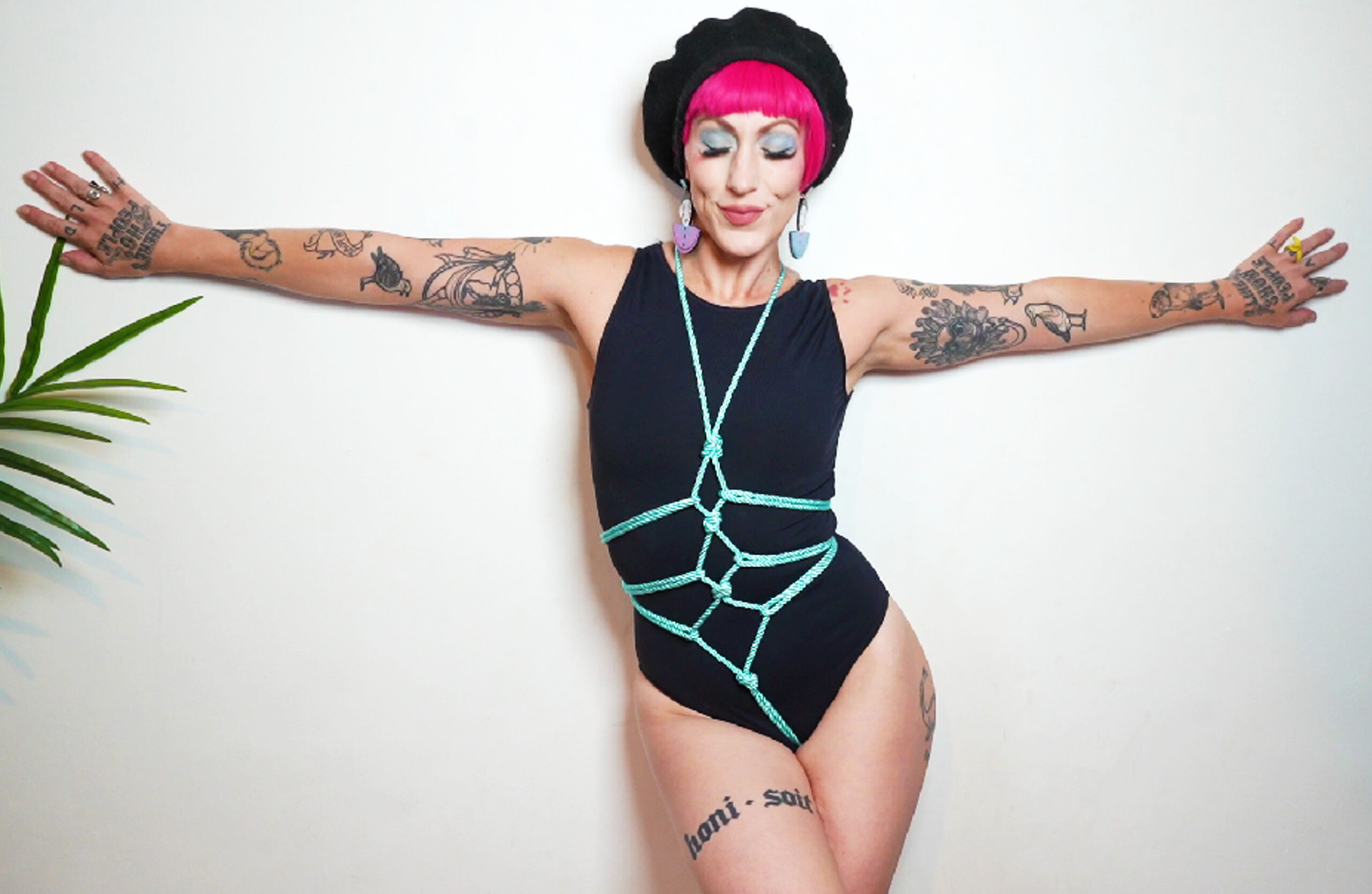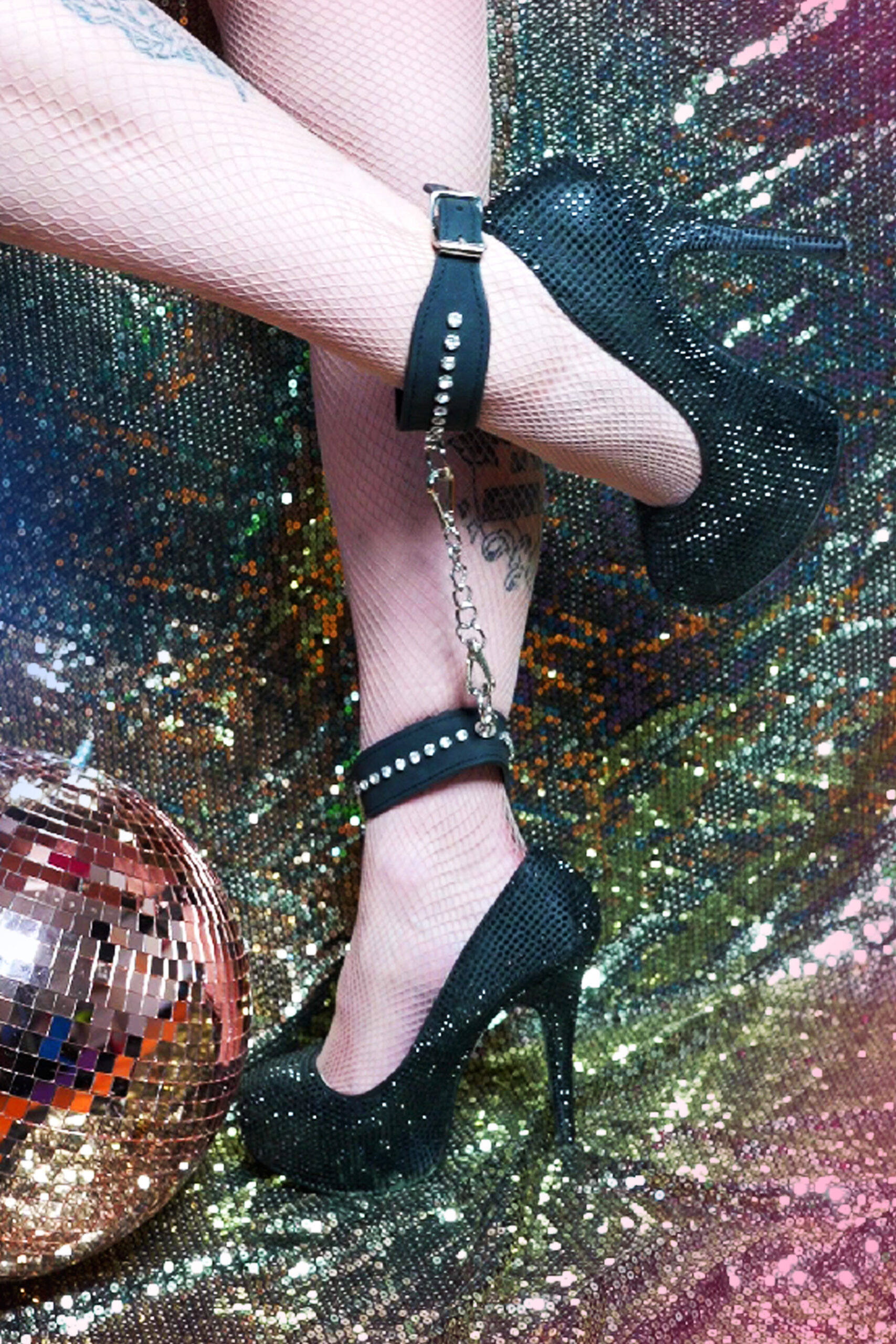Ghosting’s Emotional Toll In The Digital Dating Age

Explore this coverage in detail
Read the full piece on the blog

Explore this coverage in detail
Read the full piece on the blog

Explore this coverage in detail
Read the full piece on the blog

Xenosexuality refers to an individual’s sexual attraction towards entities that do not belong to their own species or normative human identity. This concept challenges traditional notions of human sexuality, which often focus on attractions between humans. Xenosexual relationships can involve non-human animals, mythical creatures, inanimate objects, or even abstract concepts. The term is derived from the Greek word “xenos,” meaning stranger or foreigner, highlighting the unusual nature of these attractions.
Xenosexuality refers to the phenomenon of sexual attraction towards entities that are not human, such as animals, objects, or even abstract concepts. This concept challenges traditional notions of human sexuality and highlights the complexities of attraction in a non-human context.
Xenosexuality raises important questions about the nature of desire, attachment, and relationships. It also highlights the need for a more nuanced understanding of human sexuality, one that acknowledges the diversity of human experiences and attractions beyond the traditional categories of human-human or human-animal interactions.
Xenosexuality refers to a range of unconventional sexual attractions that deviate from traditional human pairings and societal norms. It encompasses various forms of relationships and desires that may involve non-human entities, such as animals, objects, or even fictional characters.
This concept challenges the common understanding of sexuality as being exclusively human-to-human. By exploring these alternative attractions, we can gain a deeper insight into the complexities of human desire and the ways in which our societal conditioning shapes our perceptions of what is considered acceptable or desirable.
Xenosexual attractions, a term used to describe romantic or erotic feelings towards non-human entities, are often stigmatized and misunderstood in human society. At its core, xenosexuality involves an emotional connection with something that is not typically considered a suitable object of affection, such as animals. These attractions can take many forms, ranging from zoophilic inclinations – the desire to engage in sexual activities with animals – to more abstract concepts like anthropomorphism.
When it comes to human relationships with animals, particularly in the context of zoophilia, there are several subcategories to consider. Bestiality, also known as zoophilia, refers to the act of engaging in sexual activity with an animal. This behavior is widely considered taboo and is often linked to power dynamics, with humans being seen as dominant over animals. On the other hand, there are those who advocate for a more nuanced understanding of human-animal interactions, recognizing that certain individuals may form deep emotional bonds with animals.
Anthropomorphism, on the other hand, involves attributing human-like qualities or characteristics to non-human entities, such as objects, animals, or even concepts. This can manifest in various ways, from the way people interact with their pets to the use of anthropomorphic characters in literature and art. While anthropomorphism is not necessarily linked to romantic or erotic feelings, it does highlight the complex and multifaceted nature of human attraction.
Other forms of xenosexuality include xenophilia, which involves a romantic interest in non-human entities, such as animals or objects, without necessarily implying any physical contact. Xenolatry, meanwhile, refers to an excessive or irrational admiration for a particular entity, often to the point of obsession. Finally, there’s xenogamy, which is the hypothetical act of reproduction between different species – a concept that raises complex questions about biology, ethics, and human understanding.
Xenosexual attractions encompass a diverse range of desires that extend beyond the traditional boundaries of human intimacy, involving connections with non-human entities such as animals or inanimate objects.
The realm of xenosexual attraction also includes pedophilic tendencies towards prepubescent humans, a complex and sensitive topic. It is essential to acknowledge that these attractions are often viewed as taboo and may be considered illegal in many jurisdictions due to concerns about power imbalance, vulnerability, and long-term effects on the developing individual.

Here are some key points related to xenosexual attractions, particularly those involving prepubescent humans:
The complexities surrounding these attractions highlight the need for nuanced discussions that consider multiple perspectives and potential consequences. By exploring the intricacies of xenosexual attractions, it’s possible to foster greater understanding and empathy while acknowledging the boundaries that are essential for healthy relationships between humans and others.
Xenosexuality refers to romantic, emotional, or physical attractions that extend beyond the boundaries of human relationships. This phenomenon encompasses a wide range of non-traditional desires and connections, often involving individuals from diverse species or non-human entities. Within this realm, various forms of xenosexuality have emerged, including but not limited to, anthropomorphic expressions, interspecies romance, and even parasitic or symbiotic relationships. By delving into the complexities of xenosexuality, it is possible to gain a deeper understanding of human nature and the diverse ways in which we connect with others – or others alike.
Xenosexual expressions have been found in various cultures and societies, reflecting complex and often contradictory attitudes towards non-human entities as potential sexual or romantic partners. In English language, examples of xenosexual expressions include words like “beastiality” or “zoophilia”, which describe the act of engaging in sexual activity with animals. However, these terms are not only used to label abnormal behavior but also evoke strong moral and social disapproval.
In some cultures, the concept of animism is closely tied to xenosexual expressions. Animism is the belief that non-human entities, such as plants, animals, or natural objects, possess a spiritual essence or soul. This worldview can lead to a more nuanced understanding of human-nonhuman relationships and may influence the way people perceive and express their desires for non-human partners.

In ancient Greece, for example, there were stories about humans engaging in same-sex relationships with gods and animals, which were seen as divine and sacred. Similarly, in some indigenous cultures, shamanic practices involve entering trance states to communicate with animal spirits or ancestors, blurring the lines between human and nonhuman. long life batteries
In modern Western societies, xenosexual expressions are often stigmatized and pathologized, reflecting a dominant culture of human centrality and speciesism. However, this does not mean that people do not experience desires for non-human entities. Instead, these desires may be suppressed or hidden due to social pressure and cultural norms.
A more inclusive understanding of xenosexuality could challenge traditional power dynamics and highlight the diversity of human experiences. By exploring the complexities of human-nonhuman relationships, we can gain a deeper understanding of what it means to be human and how our desires and attractions are shaped by our culture, history, and biology.
Xenosexual expressions refer to the attraction, fascination, or identification with non-human entities, such as animals, objects, or concepts, that deviate from traditional human-normative relationships and desires. This concept challenges traditional notions of sexuality and highlights the complexity of human emotions and experiences.
Cultures and societies have long been fascinated by non-human entities, often reflecting their own values, beliefs, and anxieties through myths, legends, and art. For example, in Japanese culture, the “Yokai” are supernatural creatures that embody both human and animal features, representing the boundary between nature and humanity. Similarly, in some Indigenous cultures, animals are considered to possess spiritual essence and are revered for their wisdom and strength.
Media representation also plays a significant role in shaping xenosexual expressions. Films like “Avatar” (2009) and “Princess Mononoke” (1997) feature humans who form romantic relationships with nature spirits or animals, blurring the lines between human and non-human. These depictions often perpetuate stereotypes, yet also offer a platform for exploring complex themes such as colonialism, environmentalism, and identity.
Language is another crucial aspect of xenosexual expression. Words like “therianthropy” (the practice of identifying with animals) or “zooerotica” (romantic interest in non-human animals) highlight the diversity of human desires and attractions. In English, words like “kinship” and “animism” acknowledge the complex relationships between humans and non-human entities.

The relationship between cultural norms, media representation, and xenosexual expressions is multifaceted and context-dependent. While some societies may view such attractions as taboo or unacceptable, others may celebrate them as a source of creativity, inspiration, or spiritual connection. product mirrors As we continue to explore the complexities of human emotions and experiences, it’s essential to approach these topics with sensitivity, respect, and an open-minded perspective.
Xenosexuality refers to an individual’s strong sexual attraction or fixation on non-human entities, such as animals, objects, or even inanimate concepts. This phenomenon challenges traditional notions of human sexuality and blurs the lines between reality and fantasy. Philosophers and psychologists have long grappled with the implications of xenosexual desires, questioning the nature of consent, agency, and the self in these unconventional relationships.
Xenosexuality is a complex and multifaceted phenomenon that defies easy categorization or definition. club catsuit At its core, it refers to the phenomenon of being attracted to non-human entities, such as animals, objects, or even abstract concepts. On one hand, xenosexual attractions can be seen as a manifestation of our primal desires and instincts, which are deeply rooted in our evolutionary history. For example, zoophilia, or attraction to animals, has been observed in humans throughout history and across cultures, often serving as a way to express repressed human emotions or fantasies.
From a psychological perspective, xenosexual attractions can be understood through the lens of object relations theory, which posits that human relationships are formed through attachment to objects or entities that embody certain qualities or characteristics. In the case of xenosexuality, these objects may take on symbolic or metaphorical significance, representing idealized versions of ourselves, our desires, or our fantasies. This can lead to a blurring of boundaries between human and non-human entities, as individuals become increasingly invested in relationships with their objectified “lovers.”
Philosophically speaking, xenosexuality challenges traditional notions of identity, selfhood, and the human condition. It raises important questions about the nature of subjectivity and the limits of human consciousness. For instance, can a non-human entity truly be an “object” of desire, or does it possess its own agency and autonomy? Moreover, what implications do xenosexual attractions have for our understanding of love, intimacy, and relationships in general?
Furthermore, xenosexuality highlights the complexities of power dynamics in relationships. When humans form attachments with non-human entities, who wields power and control – the human or the object? This dichotomy has significant implications for issues like consent, exploitation, and the objectification of marginalized groups.
In conclusion, the study of xenosexuality offers a unique window into the complexities of human psychology and philosophy. By exploring these attractions beyond the boundaries of the human norm, we can gain a deeper understanding of the intricacies of desire, attachment, and relationships in general – as well as challenge our assumptions about what it means to be human.
Xenosexuality refers to the phenomenon of experiencing attraction to non-human entities, such as objects, animals, or inanimate things. While this concept may seem unusual or even taboo, it raises important philosophical and psychological questions about the nature of human emotions and behavior.
Understanding the complex interplay between cognitive biases, attachment styles, and emotional regulation can help us better comprehend the underlying psychological mechanisms that drive xenosexually oriented behaviors. By acknowledging these factors, we can work towards creating a more inclusive and accepting environment for individuals who experience unusual attractions, rather than stigmatizing or pathologizing their desires.
Xenosexuality refers to sexual attractions or desires that fall outside the boundaries of typical human sexuality, often sparking intense curiosity and debate within societies. Historically, individuals exhibiting non-traditional sexual orientations have faced marginalization, stigma, and persecution, with societal responses ranging from outright condemnation to attempts at pathologization.
Xenosexuality refers to attractions towards non-human entities, which can include animals, objects, or even concepts. Societal responses to xenosexuality have been largely stigmatizing and pathologizing, reflecting a broader cultural fear of deviation from normative human sexuality.
Stigma is evident in the way individuals who exhibit xenosexual tendencies are often marginalized or ostracized within their communities. This can lead to feelings of isolation, shame, and guilt, further exacerbating mental health issues such as anxiety and depression. For instance, people with zoophilic (animal-sexual) attractions may face ridicule, judgment, or even criminalization in certain jurisdictions.
Pathologization is another response that perpetuates negative attitudes towards xenosexuality. Mental health professionals often view these attractions as symptoms of an underlying psychological disorder, which can lead to coercive interventions and “treatments” aimed at “curing” individuals of their xensexual desires. This approach neglects the complexity of human sexuality and ignores the possibility that non-human objects or entities can hold symbolic or emotional significance for some people.
Language also plays a crucial role in shaping societal responses to xenosexuality. Normalizing language, such as using euphemisms or sanitizing terms, can contribute to the marginalization of individuals who experience xensexual attractions. For example, referring to zoophilic activities as “bestiality” rather than “zoophilia” reinforces a negative stigma and implies that these practices are aberrant or deviant.
Furthermore, societal responses to xenosexuality often rely on outdated and heteronormative concepts of human sexuality, which fail to account for the diversity of human experiences. The medical model of sexology, in particular, has been criticized for its Eurocentric and patriarchal assumptions, neglecting the ways in which non-human entities can be perceived and desired across cultures and historical periods.
Xenosexuality, or xenosexual attractions, refer to romantic, emotional, or physical connections between individuals from different species. This phenomenon challenges traditional human norms and raises questions about the societal response to such attractions.
The impact of societal response on individuals who experience xenosexual attractions is profound. Those who identify as xenosexual often face stigma, marginalization, and exclusion from mainstream society. They may be viewed as abnormal, deviant, or even threatening, leading to feelings of shame, guilt, and isolation. The weight of these negative reactions can lead to mental health issues such as depression, anxiety, and suicidal thoughts.
Societal response to xenosexuality is shaped by cultural and historical contexts. In some cultures, interspecies relationships are viewed as taboo or even sacrilegious, while in others they may be seen as acceptable or even celebrated. The lack of understanding and education about xenosexual attractions can perpetuate fear, misinformation, and prejudice.
Furthermore, the media’s portrayal of non-human species in a romanticized or exploitative manner can contribute to the objectification and marginalization of individuals who experience xenosexual attractions. This reinforcement of traditional power dynamics and species hierarchies can make it more difficult for those with xenosexual attractions to find acceptance and validation.
However, there are also examples of societal response that promote understanding and inclusivity. Organizations and communities dedicated to supporting individuals with xenosexual attractions offer a safe space for education, empowerment, and connection. These initiatives recognize the complexity and diversity of human experience, encouraging a more nuanced exploration of what it means to be human.
The key to fostering a more inclusive societal response lies in challenging our assumptions and biases about species boundaries, power dynamics, and human identity. By promoting empathy, education, and understanding, we can create an environment where individuals with xenosexual attractions feel valued, respected, and accepted for who they are.
Xenosexuality refers to sexual attractions or desires for non-human entities, which challenge the traditional human-centric understanding of sexuality and intimacy. This concept has gained significant attention in recent years, particularly with the rise of non-binary and queer identities, as well as the increasing recognition of animal rights and welfare. Xenosexuality can manifest in various forms, such as zoophilia, where individuals experience romantic or erotic attractions towards animals, or anthropomorphism, where humans attribute human-like qualities to non-human entities like objects, nature, or fictional characters.
Xenosexuality refers to the attraction towards individuals or beings that are not typically considered human, such as non-human animals, fantasy creatures, or even inanimate objects. This phenomenon has been explored in various forms of media, including literature, film, and television.
In recent years, there has been a growing trend of depicting non-human characters with romantic or sexual interests in popular media. For example, in the TV series “Attack on Titan,” the human protagonist Eren Yeager develops feelings for a female Titan named Annie Leonhart, while in the novel “The Fifth Season” by N.K. Jemisin, a character’s attraction to a being known as a “Fifth” is explored.

These representations often serve as commentary on societal norms and expectations surrounding human relationships and desires. By subverting traditional notions of romance and intimacy, creators can challenge the audience to consider alternative perspectives and experiences. Moreover, these portrayals can provide a sense of validation and representation for individuals who identify as xenosexual or are drawn to non-human partners.
However, it’s also worth noting that such representations can sometimes perpetuate stereotypes or exoticize non-human characters, reducing them to mere objects of desire rather than complex entities with their own agency. A nuanced approach is necessary to avoid these pitfalls and create more inclusive and thought-provoking depictions of xenosexuality in media.
Xenosexuality, a term that has gained significant attention in recent years, refers to romantic, emotional, or physical attractions towards non-human entities, such as animals, objects, or even concepts. This concept challenges traditional notions of human sexuality and highlights the complex and multifaceted nature of attraction. Fictional representations in media play a crucial role in shaping public perception of xenosexuality, contributing to its normalization or stigmatization.
One notable example of fictional representation is the portrayal of romantic relationships between humans and non-human entities in literature, such as in J.G. Ballard’s novel “Crash” or Jeff VanderMeer’s “Annihilation”. These works challenge traditional norms and explore the complexities of attraction and desire.
In film, movies like “The Lobster” (2015) or “Ex Machina” (2014) also touch on themes of xenosexuality, often using satire or absurdity to highlight societal anxieties. However, these depictions can be ambiguous in their intention, leaving audiences uncertain about the author’s intentions.
Moreover, social media and online platforms have created new spaces for individuals to share their experiences and connect with others who share similar attractions. This has led to a growth in online communities and forums dedicated to exploring xenosexuality, providing a platform for self-expression and validation.
However, these same platforms also perpetuate stigma and marginalization, as users often struggle to find representation and understanding of their experiences within mainstream discourse. The lack of authentic and nuanced portrayals in media contributes to the ongoing stigmatization of xenosexual individuals, who are often relegated to the periphery of societal discussion.
Ultimately, fictional representations in media have the power to shape public perception of xenosexuality, either by promoting acceptance and understanding or perpetuating negative attitudes. By exploring these complexities through nuanced and authentic storytelling, we can work towards a more inclusive and empathetic society that values diversity and promotes self-expression.
Xenosexuality, a term that delves into the realm of unconventional attractions, invites us to ponder the vast and intricate landscape of human desires. This concept challenges traditional norms and encourages an examination of our own perspectives on love, relationships, and identity. By venturing beyond the confines of societal expectations, we may uncover new insights into the complexities of the human experience and the potential for personal growth that arises from embracing our authentic selves.
Xenosexual attractions encompass a range of emotions and desires that extend beyond the human experience, including feelings for non-human entities such as animals, objects, or even fictional characters.
Moreover, engaging with xenosexual themes can foster a deeper empathy for the diverse range of experiences that exist within the natural world. By embracing the complexity and richness of non-human existence, individuals can expand their understanding of the intricate web of relationships that bind us all – humans and non-humans alike.
Xenosexuality, a term that challenges traditional notions of human sexuality, offers a unique opportunity for individuals to explore and understand their desires in a safe and supportive environment. By fostering an atmosphere where people feel empowered to express themselves without fear of judgment, we can unlock new avenues for personal growth and self-discovery.
This concept is particularly significant when considering the complexities of human attraction beyond the traditional binary framework. Xenosexuality encourages individuals to step out of their comfort zones and delve into the vast spectrum of human experiences, allowing them to develop a deeper understanding of themselves and others. By embracing this perspective, we can create a culture that celebrates diversity and promotes inclusivity.
The importance of a supportive environment cannot be overstated. It is in these spaces that individuals feel encouraged to explore their desires, free from the constraints of societal expectations. This nurturing atmosphere enables people to develop a stronger sense of self, allowing them to navigate the complexities of their own attractions with greater ease and confidence.
Moreover, fostering such an environment can lead to a broader understanding of human connections. By recognizing that attraction knows no bounds, we can work towards creating a society where individuals feel comfortable expressing their desires, regardless of whether they conform to traditional norms or defy them. This, in turn, can lead to more meaningful relationships, greater empathy, and a deeper appreciation for the complexities of human experience.
Explore Astroglide lubricants for smooth and comfortable intimacy at Peaches and Screams Buy Various Drug Stores toys for unique and exciting experiences at Peaches and Screams Shop Passion Lingerie for sexy, luxurious designs at Peaches and Screams Explore Clean Stream products for hygienic intimacy at Peaches and Screams Buy luxurious glass toys at Peaches and Screams Discover glass dildos for smooth, firm pleasure at Peaches and Screams
Cafe Sant Jaume Valencia Carmen Alexandra Derwen Roots Your Relationship Edge

Shop Sliquid lubricants for natural and smooth intimacy at Peaches and Screams Discover packers and packing underwear for comfort and confidence at Peaches and Screams Discover glass dildos for smooth, firm pleasure at Peaches and Screams Shop striped and patterned stockings at Peaches and Screams Buy Butt Plug Kits for enhanced anal play at Peaches and Screams Discover novelty gifts for fun and excitement at Peaches and Screams Buy OhMiBod vibrators for hands-free pleasure and fun at Peaches and Screams
D Magazine Salon Melissa J Design Detailed Weddings LA Apples and Pears Co. inflatable toys for anal sexy pouch briefs UK


Bisexuality is often misunderstood as being somewhere on the straight-to-gay spectrum, but in reality, it’s a complex and multifaceted orientation that can’t be reduced to labels or categories.
Bisexuality, often misunderstood or overlooked, plays a significant role in the complexities of human attraction and identity. As a spectrum of experiences that encompass both attraction to and repulsion from the same sex, as well as attraction to multiple genders, bisexuality offers a unique perspective on the nature of love, desire, and relationships. inflatable butt plugs Historically, the representation of bisexuality has been limited, with many being reduced to stereotypes or marginalized within the broader LGBTQ+ community. massage essentials However, recent efforts to shed light on this aspect of human experience are gaining momentum, providing individuals with a platform to explore their identities and connect with like-minded individuals.
Bisexuality encompasses a range of experiences and identities, and can manifest in distinct ways for individuals. While often stereotyped as simply being attracted to people of multiple genders, bisexuality is more complex and multifaceted than this simplicity suggests. Different types of bisexuality exist, each with its own unique characteristics and nuances.


Navigating relationships can be complex and multifaceted, especially when it comes to attraction and identity. In many societies, traditional norms around gender and sexuality can create rigid expectations and pressures on individuals to conform to certain labels or behaviors. However, for those who experience attraction in a way that doesn’t fit neatly into binary categories, navigating relationships can take on an added layer of complexity.
Mental health plays a vital role in overall well-being, encompassing emotional, psychological, and social aspects. nip stim For individuals navigating their identities, including those who identify as bisexual, mental health can be particularly crucial in addressing the complexities of attraction beyond traditional gender norms.
Bisexuality is often misunderstood as simply being attracted to multiple partners, but it’s a complex and multifaceted identity that encompasses more than just physical attraction. g-spot vibrators
Shop small dildos and probers for precise pleasure at Peaches and Screams Buy Empire Labs products for unique and high-quality toys at Peaches and Screams Buy plus-size bras and bra sets at Peaches and Screams Explore penis extenders for enhanced performance at Peaches and Screams Shop extra safe condoms for peace of mind at Peaches and Screams Buy plus-size bras and bra sets at Peaches and Screams
Press on Honey Madison Art Therapy A Glossy Life Blog Cleveland Relationship Therapy Emily Patricia Fae

Funny and lighthearted roles can bring a playful twist to even the most mundane moments, including intimate encounters between partners. Embracing these carefree personas allows couples to tap into their creativity, laugh together, and rekindle the spark in their relationship. stud strap By exploring different humorous characters and scenarios, individuals can break free from the constraints of everyday life and indulge in a world of fantasy and experimentation.


Fantasy and adventure have long been cornerstones of human imagination, captivating our minds and inspiring our passions. male anal beads UK In the realm of intimate relationships, couples can tap into this sense of wonder and excitement by incorporating fantastical elements into their romantic play. By embracing the thrill of the unknown and the magic of make-believe, partners can reignite the spark in their relationship and discover new avenues for connection and pleasure.

When it comes to exploring new ways to spice up intimacy, one often-overlooked yet incredibly effective approach is role reversal. By switching roles and perspectives, couples can disrupt the status quo and reignite their passion for each other. pump bulb plug This phenomenon, known as power dynamics, is rooted in psychology and sociology, where individuals subconsciously crave control, submission, or empowerment in various relationships – including romantic partnerships. sleep cami plus


Society relentlessly pushes individuals towards conforming to rigid binary constructs, dictating how we should look, behave, and identify. This pressure to fit into pre-defined boxes can be especially crushing for those who experience gender identity outside of these limitations.
Demigender individuals face a unique set of challenges in a world that stubbornly clings to the binary. Societal expectations, deeply ingrained and pervasive, often fail to recognize or understand the nuanced experiences of those who identify partially with one gender while also existing outside of it. This lack of recognition can lead to feelings of isolation, confusion, and profound dissonance between one’s internal sense of self and the external world’s perception.
Navigating gendered spaces as a demigender person can feel like constantly walking a tightrope. Everyday interactions, from choosing clothing and pronouns to simply existing in public, become fraught with potential discomfort or misgendering. Bathrooms, locker rooms, and even casual conversations can trigger anxiety and self-doubt.
The pressure to perform a gender that doesn’t align with one’s identity can be emotionally draining. Demigender individuals may feel compelled to adopt mannerisms or expressions deemed acceptable within societal norms, leading to a disconnect between their authentic selves and the image they project outwards. This constant masking can take a toll on mental well-being and contribute to feelings of invisibility and alienation.
Internalized binary norms, absorbed through years of societal conditioning, further complicate the experiences of demigender individuals. These ingrained beliefs, often unconscious, can lead to self-doubt and questioning one’s own validity. A demigender person might struggle with internal conflicts, feeling like an outsider both within and outside their perceived gender.
The weight of societal expectations can be particularly heavy for demigender youth who are still navigating their identities. Facing discrimination, misunderstanding, and a lack of representation can contribute to feelings of loneliness and hopelessness. It is crucial that demigender individuals have access to supportive environments, inclusive spaces, and accurate information about gender identity.
The human experience is diverse and multifaceted, yet society often confines us within rigid binary constructs. This pressure to conform can be particularly challenging for individuals who identify as demigender, those whose gender exists partially outside of the traditional male-female dichotomy. In a world that stubbornly clings to these limitations, demigender people face unique struggles in expressing their true selves authentically.
Finding the right language to express demigender identity can be incredibly difficult.
This linguistic barrier can contribute to feelings of isolation and make it challenging for demigender individuals to connect with others who understand their experiences.
The lack of widely recognized terms and definitions for demigender experiences often leaves individuals searching for words that accurately capture their complex feelings. Even when they find seemingly fitting labels, these terms might not resonate with everyone within the demigender community, highlighting the diversity of individual experiences and the fluidity of gender identity. Society’s insistence on binary categories further complicates matters, forcing demigender people to navigate a world that often fails to understand or acknowledge their existence outside those confines.
This linguistic barrier can contribute to feelings of isolation and make it challenging for demigender individuals to connect with others who understand their experiences.
The journey of self-discovery is rarely linear, especially when it comes to gender identity. For demigender individuals, this exploration often involves navigating a world that struggles to comprehend anything beyond the traditional binary. toy cleaner Expressing this complex and fluid identity can be a deeply personal struggle, fraught with challenges both internal and external.
One of the most significant obstacles is the lack of language to accurately describe demigender experiences. The absence of widely recognized terms and definitions leaves individuals searching for words that capture the nuances of their identities.
This linguistic gap can create a sense of isolation, as demigender people may find themselves struggling to articulate their feelings and connect with others who share similar experiences.
Adding to this complexity is the fluidity of gender identity itself. Demigender individuals often experience shifts and changes in their gender expression over time. What feels right one day might not resonate as strongly the next, making it even more challenging to find a label that encompasses the ever-evolving nature of their identity.
Society’s insistence on binary categories further complicates matters. Demigender people are often forced to choose between two options that don’t accurately reflect their experiences, leading to feelings of pressure and invalidation. This societal expectation can make it even more difficult for demigender individuals to embrace and express their true selves authentically.
The human experience is diverse and multifaceted, yet society often confines us within rigid binary constructs. This pressure to conform can be particularly challenging for individuals who identify as demigender, those whose gender exists partially outside of the traditional male-female dichotomy. In a world that stubbornly clings to these limitations, demigender people face unique struggles in expressing their true selves authentically. Jimmy Jane fetish UK
Demigender individuals adult toy shop experience dissonance and dysphoria when societal expectations clash with their internal sense of self. This mismatch between perceived identity and lived experience can manifest as emotional distress, anxiety, and a sense of alienation.
The pressure to conform to binary gender norms can be particularly damaging to mental well-being. Demigender individuals may feel compelled to suppress or mask parts of themselves to appease societal expectations, leading to internal conflict and feelings of inauthenticity.
This forced conformity can contribute to depression, low self-esteem, and social isolation. The lack of understanding and acceptance from others can amplify these struggles, making it difficult for demigender individuals to feel comfortable and accepted in their own skin.
The struggle for demigender individuals often involves navigating a world that prioritizes binary categories, leaving little space for identities that exist outside of those confines. This lack of recognition and understanding can contribute to feelings of isolation, loneliness, and mental health challenges.
Social isolation can be particularly profound for demigender people who may feel unable to connect with others who understand their experiences. The absence of supportive communities and a lack of representation in media and popular culture can exacerbate feelings of alienation and make it difficult to find solace or belonging.

Furthermore, the constant pressure to conform to societal expectations can take a toll on mental well-being. Demigender individuals may experience anxiety, depression, and body dysphoria as they grapple with the dissonance between their internal sense of self and the external world’s perception.

It is essential to create safe and inclusive spaces where demigender individuals feel accepted and celebrated for who they are. Promoting awareness and understanding of demigender identities is crucial to dismantling societal norms that perpetuate binary thinking and marginalize those who exist outside these limitations.
Demigender individuals often experience anxiety and depression as a result of the challenges they face in a world that predominantly operates within a binary gender system.
The societal pressure to conform to rigid gender norms can be emotionally draining, leading to feelings of dysphoria, invalidation, and social isolation. Demigender people may feel compelled to suppress or mask parts of their identity to avoid judgment or rejection from others.
This internal conflict can contribute to anxiety and depression as they navigate a world that often fails to understand or acknowledge their experiences.
The lack of representation and acceptance in society can further exacerbate these feelings, leaving demigender individuals feeling alone and misunderstood.
Navigating gender identity in a binary-dominated world can be especially challenging for those who identify as demigender. This unique experience presents a multitude of struggles, ranging from finding the right language to express their identities to facing societal pressures that fail to recognize or understand their existence outside traditional gender categories.
Finding support and community is crucial for demigender individuals who often face isolation and misunderstanding. Online resources and forums can provide a vital lifeline, offering safe spaces for connection, understanding, and shared experiences. These platforms allow demigender people to connect with others who understand their unique challenges and celebrate their identities. BDSM restraints UK
Numerous online communities and support groups cater specifically to the needs of demigender individuals. These spaces offer opportunities for discussion, advice, and emotional support from those who have walked similar paths. suspender hosiery UK Participants can share their stories, ask questions, and find validation in knowing that they are not alone.
Online resources also provide valuable information about demigender identities, terminology, and experiences. Websites, blogs, and articles written by demigender individuals and allies offer insights into navigating gender expression, coming out, and advocating for oneself in a world that often struggles to understand. Rimba
Demigender individuals experience dissonance and dysphoria when societal expectations clash with their internal sense of self. This mismatch between perceived identity and lived experience can manifest as emotional distress, anxiety, and a sense of alienation.

The pressure to conform to binary gender norms can be particularly damaging to mental well-being. Demigender individuals may feel compelled to suppress or mask parts of themselves to appease societal expectations, leading to internal conflict and feelings of inauthenticity.
This forced conformity can contribute to depression, low self-esteem, and social isolation. The lack of understanding and acceptance from others can amplify these struggles, making it difficult for demigender individuals to feel comfortable and accepted in their own skin.
Finding support and community is crucial for demigender individuals who often face isolation and misunderstanding. LGBTQ+ organizations and groups provide a vital source of connection, understanding, and resources.
These organizations offer a range of services, including support groups, educational resources, legal aid, and advocacy efforts. They provide a safe space for demigender individuals to connect with others who understand their experiences and navigate the challenges of living authentically in a world that often struggles to accept them.
Finding support and community is essential for demigender individuals who often face isolation and misunderstanding.
Connecting with other demigender people can provide validation, reduce feelings of loneliness, and offer a space where they feel seen and understood.
Online communities and forums dedicated to demigender experiences can be particularly valuable.
These platforms allow individuals to connect with others who share similar journeys, discuss their experiences, and access resources specific to demigender identities.
In addition to online spaces, seeking out local LGBTQ+ organizations or support groups can offer in-person connection and community building.
These groups provide opportunities for social interaction, shared experiences, and mutual support.

Breadcrumbing, the act of offering sporadic attention and affection without any commitment, can have detrimental effects on mental health. It creates a cycle of hope and disappointment, leading to feelings of anxiety, insecurity, and low self-esteem.
The constant uncertainty and mixed signals leave individuals in a state of emotional limbo, unsure of their place or the nature of the relationship. This can lead to excessive worrying about the other person’s intentions, constantly analyzing every interaction for hidden meanings. The fear of rejection and abandonment becomes heightened, fueling feelings of insecurity and inadequacy.
Furthermore, breadcrumbing can damage self-worth. Individuals may start doubting their own attractiveness or desirability if they are only receiving fleeting attention. This can lead to a negative self-image and difficulty forming healthy relationships in the future.
The emotional rollercoaster caused by breadcrumbing takes a toll on mental well-being. Individuals experience heightened anxiety as they anxiously await sporadic contact, often overthinking every interaction and searching for hidden meanings. This uncertainty creates a breeding ground for insecurity, leaving them questioning their worth and the validity of any connection.
The consistent cycle of hope followed by disappointment erodes self-esteem. Being treated as an occasional option rather than a priority chips away at a person’s sense of value. They may start to believe they are not worthy of genuine affection or commitment, impacting their ability to form healthy, fulfilling relationships in the future.
The emotional rollercoaster caused by breadcrumbing can have a profound impact on mental well-being.
Breadcrumbing, the practice of giving intermittent attention and affection without any real commitment, can have serious consequences for mental health.
The emotional impact of breadcrumbing is significant, often leading to feelings of anxiety, insecurity, and low self-esteem. The inconsistent nature of the interactions creates a sense of uncertainty and confusion, leaving individuals constantly questioning the other person’s intentions. This emotional rollercoaster can be incredibly draining.
Individuals may find themselves constantly analyzing every text message or call, searching for hidden meanings and signs of commitment that never materialize. This constant need for reassurance can lead to heightened anxiety and a preoccupation with the relationship.
The lack of clear boundaries and emotional investment in breadcrumbing can erode self-worth. Individuals may begin to doubt their own attractiveness or desirability if they are only receiving sporadic attention. This can damage their sense of self and make it difficult for them to form healthy relationships in the future.
Breadcrumbing, while seemingly innocuous, can have detrimental effects on mental health.
Moving forward from breadcrumbing requires acknowledging its impact and taking steps to protect your well-being. Setting clear boundaries, prioritizing your emotional health, and focusing on building healthy relationships are crucial for healing and moving on.
Breadcrumbing can significantly damage mental health. It creates a cycle of hope and disappointment, leaving individuals feeling anxious, insecure, and questioning their self-worth.
The intermittent nature of attention leads to constant uncertainty about the other person’s intentions. This ambiguity fuels anxiety as individuals desperately seek reassurance and signs of commitment that rarely materialize.
Repeated experiences of hope followed by disappointment erode self-esteem. Feeling like an occasional option rather than a priority chips away at a person’s sense of value, leading to feelings of inadequacy and making it harder to form healthy relationships in the future.
Breadcrumbing, characterized by sporadic attention and affection without commitment, can significantly impact mental well-being.
Setting boundaries is essential for protecting your mental health when dealing with breadcrumbing. Clearly communicate what you are and are not willing to accept in a relationship.
Make it clear that you deserve consistent attention and respect, and you won’t tolerate being treated as an afterthought.
It may be necessary to limit contact with the person who is breadcrumbing you. This might involve unfollowing them on social media, avoiding places where you are likely to encounter them, or simply taking a break from communicating.
Focus on your own well-being and prioritize activities that bring you joy and fulfillment.
Spend time with supportive friends and family, engage in hobbies you enjoy, and practice self-care techniques like exercise, meditation, or spending time in nature.
Breadcrumbing, characterized by sporadic attention and affection without commitment, can significantly impact mental well-being.
Setting boundaries is essential for protecting your mental health when dealing with breadcrumbing. Clearly communicate what you are and are not willing to accept in a relationship.
Make it clear that you deserve consistent attention and respect, and you won’t tolerate being treated as an afterthought.
It may be necessary to limit contact with the person who is breadcrumbing you. This might involve unfollowing them on social media, avoiding places where you are likely to encounter them, or simply taking a break from communicating.
Focus on your own well-being and prioritize activities that bring you joy and fulfillment.
Spend time with supportive friends and family, engage in hobbies you enjoy, and practice self-care techniques like exercise, meditation, or spending time in nature.
Challenge negative thoughts that arise from breadcrumbing by recognizing them as distortions of reality. Remember that their behavior reflects their own insecurities or lack of commitment, not a reflection of your worth.
Replace negative thoughts with positive affirmations and focus on your strengths and accomplishments. Remind yourself of past successes and the qualities that make you desirable.
Engage in activities that boost your self-esteem and confidence. Pursue hobbies, spend time with loved ones, and celebrate your achievements, no matter how small.
Breadcrumbing can leave you feeling emotionally drained and questioning your worth. It’s important to remember that their behavior is a reflection of them, not you.
Seek support from trusted friends or family members. Talking about your experiences and feelings can help you process the emotional turmoil and gain valuable perspective.
Consider seeking professional help from a therapist or counselor. They can provide guidance and coping strategies to navigate the emotional challenges of breadcrumbing and develop healthier relationship patterns.
Join support groups or online forums where you can connect with others who have experienced similar situations. Sharing your experiences and learning from others’ journeys can be incredibly helpful in your healing process.
Focus on self-care practices that nourish your mental and emotional well-being. This could include exercise, mindfulness techniques, spending time in nature, or engaging in activities that bring you joy.

Moving forward from the emotional turmoil of breadcrumbing requires a conscious effort to prioritize your well-being. It’s essential to acknowledge the impact it has had on you and take proactive steps to heal and build healthier relationships.
Breadcrumbing, characterized by sporadic attention and affection without commitment, can significantly impact mental well-being.
Setting boundaries is essential for protecting your mental health when dealing with breadcrumbing. Clearly communicate what you are and are not willing to accept in a relationship.
Make it clear that you deserve consistent attention and respect, and you won’t tolerate being treated as an afterthought.
It may be necessary to limit contact with the person who is breadcrumbing you. This might involve unfollowing them on social media, avoiding places where you are likely to encounter them, or simply taking a break from communicating.
Focus on your own well-being and prioritize activities that bring you joy and fulfillment.
Spend time with supportive friends and family, engage in hobbies you enjoy, and practice self-care techniques like exercise, meditation, or spending time in nature.
Remember that their behavior reflects their own insecurities or lack of commitment, not a reflection of your worth.
Moving forward from the emotional turmoil of breadcrumbing requires a conscious effort to prioritize your well-being.
It’s essential to acknowledge the impact it has had on you and take proactive steps to heal and build healthier relationships.
Moving forward after experiencing breadcrumbing requires acknowledging its impact and taking deliberate steps towards healing. It’s a journey of rediscovering your worth and establishing healthy boundaries.
Start by recognizing that the breadcrumbing behavior stems from the other person’s insecurities or lack of commitment, not from any flaw in you.
Challenge the negative thoughts that arise from this experience. Remind yourself of your strengths, accomplishments, and qualities that make you worthy of genuine love and respect.
Setting clear boundaries is crucial. Communicate your expectations for a relationship clearly and firmly. Make it known that you deserve consistency and respect, and you won’t settle for anything less.
Limit contact with the person who breadcrumbed you if necessary. This might involve unfollowing them on social media, avoiding places where you might encounter them, or taking a break from communication altogether.
Focus your energy on nurturing your own well-being. Engage in activities that bring you joy, spend time with supportive friends and family, and prioritize self-care practices that nourish your mind and body.

Remember, healing takes time. Be patient with yourself, celebrate small victories along the way, and don’t hesitate to seek support from trusted friends, family members, or a therapist if needed.
Moving forward after experiencing breadcrumbing requires acknowledging its impact and taking deliberate steps towards healing. It’s a journey of rediscovering your worth and establishing healthy boundaries.
Start by recognizing that the breadcrumbing behavior stems from the other person’s insecurities or lack of commitment, not from any flaw in you.
Challenge the negative thoughts that arise from this experience. Remind yourself of your strengths, accomplishments, and qualities that make you worthy of genuine love and respect.
Setting clear boundaries is crucial. Communicate your expectations for a relationship clearly and firmly. Make it known that you deserve consistency and respect, and you won’t settle for anything less.
Limit contact with the person who breadcrumbed you if necessary. This might involve unfollowing them on social media, avoiding places where you might encounter them, or taking a break from communication altogether.
Focus your energy on nurturing your own well-being. Engage in activities that bring you joy, spend time with supportive friends and family, and prioritize self-care practices that nourish your mind and body.
Remember, healing takes time. Be patient with yourself, celebrate small victories along the way, and don’t hesitate to seek support from trusted friends, family members, or a therapist if needed.
Pets R 4 U
Revolution Essex

Gender non-conformity encompasses a wide spectrum of identities and expressions that challenge traditional societal norms surrounding gender. Individuals who identify as gender non-conforming may express their gender identity in ways that deviate from expectations associated with their assigned sex at birth. This exploration delves into the meaning of gender non-conformity in contemporary society, examining its diverse manifestations, challenges, and implications for individuals and communities.
Gender non-conformity is a broad term that describes people whose gender expression or identity doesn’t align with the expectations typically associated with the sex they were assigned at birth. It’s about how someone expresses their gender through clothing, behavior, interests, and more. This expression might differ from what society considers “masculine” or “feminine.”
Understanding gender non-conformity is crucial for creating a more inclusive and accepting society. It recognizes that gender is not a binary concept and allows individuals to express themselves authentically without judgment.
Gender non-conformity challenges the restrictive notion that gender exists solely as two distinct categories: male and female. It acknowledges the fluidity and diversity of human experience, recognizing that individuals may identify and express their gender in ways that fall outside these rigid boundaries. This spectrum encompasses a wide range of identities, including transgender, non-binary, genderqueer, agender, and many others.
For some, gender non-conformity might involve presenting themselves in ways that defy traditional gender norms. They may choose clothing, hairstyles, or mannerisms that are typically associated with a different gender than the one they were assigned at birth. Others may identify as non-binary, meaning their gender identity exists outside the male/female binary. They may feel like neither male nor female, or they may identify as both.
It’s important to remember that gender identity is deeply personal and unique to each individual. What constitutes gender nonconformity can vary greatly depending on cultural context and societal norms.
Historically, societies have often enforced rigid gender roles and expectations, dictating how individuals should behave, dress, and express themselves based on their assigned sex at birth. These norms were deeply ingrained in social structures, religious beliefs, and legal systems.
Over time, these traditional gender norms have begun to evolve and shift due to various factors, including changing societal values, increased visibility of LGBTQ+ individuals and movements, and growing awareness of the diversity of human experience.
While progress has been made, gender non-conformity still faces significant challenges in many parts of the world. Individuals who deviate from societal expectations may encounter prejudice, discrimination, and social stigma. This can manifest in various forms, including bullying, harassment, exclusion, and violence.
Understanding the historical context and evolution of gender norms is crucial for dismantling these rigid structures and fostering a more inclusive society that celebrates diversity and respects individual identities.
Gender non-conformity challenges traditional notions of gender by encompassing a wide spectrum of identities and expressions that defy societal expectations.

Individuals who identify as gender non-conforming often face social stigma and prejudice due to the rigid gender norms prevalent in many societies. These individuals may experience discrimination in various areas, including employment, housing, healthcare, and education. Negative stereotypes and misconceptions about gender non-conforming individuals can lead to feelings of isolation, anxiety, and depression.
It’s important to challenge these harmful stereotypes and promote understanding and acceptance of gender diversity. Education and awareness campaigns can help to dispel misinformation and foster empathy towards gender non-conforming individuals.
Creating a more inclusive society requires dismantling the systems that perpetuate gender inequality and discrimination. This includes advocating for legal protections, promoting diversity and representation in all sectors, and challenging societal norms that reinforce rigid gender roles.
Gender non-conformity is a significant challenge in today’s society, as individuals who express their gender identity outside of traditional norms often face discrimination and prejudice.
They may experience harassment, bullying, and exclusion from social circles and institutions. Access to healthcare, employment, and education can also be limited due to societal biases and discriminatory practices.
The lack of legal protections in many places further exacerbates these challenges, leaving gender non-conforming individuals vulnerable to abuse and exploitation.
Creating a truly inclusive society requires dismantling the systems that perpetuate gender inequality. This includes advocating for equal rights, promoting diversity and representation, challenging harmful stereotypes, and fostering empathy and understanding.
Finding community and support is crucial for gender non-conforming individuals navigating the complexities of a society that often lacks understanding and acceptance. Connecting with others who share similar experiences can provide invaluable emotional support, validation, and a sense of belonging.
Online platforms and social media have emerged as powerful tools for connecting with like-minded individuals regardless of geographical location. Support groups, forums, and online communities offer spaces where gender non-conforming people can share their stories, seek advice, and find solace in knowing they are not alone.
In addition to online communities, local organizations and advocacy groups often provide in-person support services, workshops, and social events. These organizations can offer resources on topics such as gender identity exploration, legal rights, and navigating societal challenges.
Building genuine connections with friends, family members, or mentors who are supportive and understanding is also essential. Having allies who listen without judgment and respect their identities can make a profound difference in the well-being of gender non-conforming individuals.
In a society that often rigidly defines gender roles, individuals who express themselves outside of these traditional norms face unique challenges and complexities. Understanding what it means to be gender non-conforming today requires examining the diverse ways people navigate identity, expression, and societal expectations.
Gender non-conformity is a broad term that describes people whose gender expression or identity doesn’t align with the expectations typically associated with the sex they were assigned at birth. It’s about how someone expresses their gender through clothing, behavior, interests, and more. This expression might differ from what society considers “masculine” or “feminine.”
Understanding gender non-conformity is crucial for creating a more inclusive and accepting society. It recognizes that gender is not a binary concept and allows individuals to express themselves authentically without judgment.
Gender non-conformity challenges the restrictive notion that gender exists solely as two distinct categories: male and female. It acknowledges the fluidity and diversity of human experience, recognizing that individuals may identify and express their gender in ways that fall outside these rigid boundaries. This spectrum encompasses a wide range of identities, including transgender, non-binary, genderqueer, agender, and many others.
For some, gender non-conformity might involve presenting themselves in ways that defy traditional gender norms.
Self-expression is a fundamental aspect of human identity. It allows individuals to communicate who they are, what they value, and how they experience the world. For gender non-conforming individuals, self-expression can be particularly significant as it provides a means to assert their authentic identities in the face of societal pressures and expectations.
Authenticity is closely intertwined with self-acceptance. Embracing one’s true self, regardless of societal norms or expectations, is crucial for mental well-being and personal growth. When individuals are able to express themselves authentically, they experience a sense of congruence between their inner world and outer expression. This alignment fosters self-confidence, reduces anxiety, and promotes a greater sense of belonging.
In a society that often enforces rigid gender roles, self-expression for gender non-conforming individuals can be a powerful act of resistance. By challenging traditional expectations, they create space for diversity and inclusivity. Their unique expressions contribute to a richer and more multifaceted understanding of gender identity.
In today’s society, the concept of gender is evolving beyond traditional binary categories. Individuals are increasingly embracing diverse expressions of gender identity and challenging societal norms.
Gender non-conformity encompasses a wide spectrum of identities and expressions that challenge traditional societal norms surrounding gender. Individuals who identify as gender non-conforming may express their gender identity in ways that deviate from expectations associated with their assigned sex at birth.
This exploration delves into the meaning of gender non-conformity in contemporary society, examining its diverse manifestations, challenges, and implications for individuals and communities.
Gender non-conformity is a broad term that describes people whose gender expression or identity doesn’t align with the expectations typically associated with the sex they were assigned at birth. It’s about how someone expresses their gender through clothing, behavior, interests, and more. This expression might differ from what society considers “masculine” or “feminine.”
Understanding gender non-conformity is crucial for creating a more inclusive and accepting society. It recognizes that gender is not a binary concept and allows individuals to express themselves authentically without judgment.
Gender non-conformity challenges the restrictive notion that gender exists solely as two distinct categories: male and female. It acknowledges the fluidity and diversity of human experience, recognizing that individuals may identify and express their gender in ways that fall outside these rigid boundaries. This spectrum encompasses a wide range of identities, including transgender, non-binary, genderqueer, agender, and many others.
For some, gender non-conformity might involve presenting themselves in ways that defy traditional gender norms.
It’s important to remember that gender identity is deeply personal and unique to each individual. What constitutes gender nonconformity can vary greatly depending on cultural context and societal norms.
Historically, societies have often enforced rigid gender roles and expectations, dictating how individuals should behave, dress, and express themselves based on their assigned sex at birth. These norms were deeply ingrained in social structures, religious beliefs, and legal systems.

Over time, these traditional gender norms have begun to evolve and shift due to various factors, including changing societal values, increased visibility of LGBTQ+ individuals and movements, and growing awareness of the diversity of human experience.
While progress has been made, gender non-conformity still faces significant challenges in many parts of the world. Individuals who deviate from societal expectations may encounter prejudice, discrimination, and social stigma. This can manifest in various forms, including bullying, harassment, exclusion, and violence.
Understanding the historical context and evolution of gender norms is crucial for dismantling these rigid structures and fostering a more inclusive society that celebrates diversity and respects individual identities.
Gender non-conformity challenges traditional notions of gender by encompassing a wide spectrum of identities and expressions that defy societal expectations.
Individuals who identify as gender non-conforming often face social stigma and prejudice due to the rigid gender norms prevalent in many societies. These individuals may experience discrimination in various areas, including employment, housing, healthcare, and education. Negative stereotypes and misconceptions about gender non-conforming individuals can lead to feelings of isolation, anxiety, and depression.
It’s important to challenge these harmful stereotypes and promote understanding and acceptance of gender diversity. Education and awareness campaigns can help to dispel misinformation and foster empathy towards gender non-conforming individuals.
Creating a more inclusive society requires dismantling the systems that perpetuate gender inequality and discrimination. This includes advocating for legal protections, promoting diversity and representation in all sectors, and challenging societal norms that reinforce rigid gender roles.
Finding community and support is crucial for gender non-conforming individuals navigating the complexities of a society that often lacks understanding and acceptance. Connecting with others who share similar experiences can provide invaluable emotional support, validation, and a sense of belonging.
Online platforms and social media have emerged as powerful tools for connecting with like-minded individuals regardless of geographical location. Support groups, forums, and online communities offer spaces where gender non-conforming people can share their stories, seek advice, and find solace in knowing they are not alone. washable cover
In addition to online communities, local organizations and advocacy groups often provide in-person support services, workshops, and social events. These organizations can offer resources on topics such as gender identity exploration, legal rights, and navigating societal challenges.
Building genuine connections with friends, family members, or mentors who are supportive and understanding is also essential. Having allies who listen without judgment and respect their identities can make a profound difference in the well-being of gender non-conforming individuals.
In a society that often rigidly defines gender roles, individuals who express themselves outside of these traditional norms face unique challenges and complexities. Understanding what it means to be gender non-conforming today requires examining the diverse ways people navigate identity, expression, and societal expectations.
Advocacy for inclusive policies and legislation is crucial in creating a society that respects and supports gender non-conforming individuals. Here’s how these efforts contribute to positive change:
**1. erotic realistic toys Legal Protections:**
Laws prohibiting discrimination based on gender identity and expression are fundamental. This ensures equal access to housing, employment, healthcare, education, and other essential services without fear of prejudice or bias.
**2. Recognition of Rights:** Legislation that recognizes the legal rights of transgender and non-binary individuals is essential. This includes issues such as name changes, access to gender-affirming healthcare, and protection from hate crimes.
**3. Inclusive Language and Policies:**
Policies that promote the use of inclusive language (e.g., allowing individuals to choose their preferred pronouns) and ensure that forms, documents, and services are accessible to all genders help create a more welcoming and equitable environment.
**4. Education and Awareness:**
Legislation can support educational initiatives aimed at raising awareness about gender identity and expression, promoting understanding, and combating discrimination. This can involve incorporating inclusive curricula in schools and providing training for educators and healthcare professionals.
**5. Access to Healthcare:**
Laws that protect access to gender-affirming healthcare, including mental health services and medical interventions such as hormone therapy and surgery, are crucial for the well-being of transgender and non-binary individuals.
**Impact on Society:**
* **Empowerment:** Inclusive policies empower gender non-conforming individuals to live authentically and participate fully in society.
* **Reduced Stigma:** By challenging discriminatory practices, legislation helps reduce stigma and create a more accepting environment.
* **Improved Mental Health:** Access to legal protections, healthcare, and social support contributes to improved mental health outcomes for gender non-conforming individuals.
* **Social Progress:** Inclusive policies reflect a society that values diversity and equality, leading to greater social progress and justice for all.
luxury penis dildos UK sexy men’s thong Advocating for these changes requires ongoing efforts from individuals, communities, and organizations working together to promote equality and inclusion.
sideways sex
On the Carpet
Tasha

Asexuality is often misunderstood as simply being a lack of sex drive or an absence of interest in physical intimacy, but this narrow definition ignores the complexity and diversity of asexual experiences.
The term “asexual” refers to a spectrum of feelings and identities related to sexual attraction, arousal, and desire. Asexuality is not just the opposite of sexuality; it’s a distinct aspect of human experience that can manifest in different ways for different people. Some asexual individuals may identify as demisexual, meaning they only feel romantic or emotional attraction after forming a deep connection with someone. Others may identify as graysexual, indicating that their feelings of attraction are somewhere in between.
Moreover, the notion that asexuality is solely the absence of desire overlooks the rich cultural and personal experiences of asexual individuals. Asexuality can be a source of strength and empowerment, allowing individuals to focus on other aspects of their lives and relationships. In contrast, the pressure to conform to societal expectations around sex and intimacy can lead to feelings of shame, anxiety, and isolation for many people.
Breaking down these myths and building understanding requires a nuanced and empathetic approach. It involves listening to the experiences and perspectives of asexual individuals, rather than relying on stereotypes or assumptions. By doing so, we can create a more inclusive and accepting environment where everyone can explore their own feelings and identities without fear of judgment or rejection.
Asexuality is a complex and multifaceted identity that encompasses a range of experiences and orientations. While often misunderstood or marginalized, asexual individuals have been advocating for greater understanding and acceptance. In recent years, there has been an increasing push to recognize and celebrate the diversity within the asexual community, including the existence of different sub-identities and nuances. As we explore the world of asexuality, it becomes clear that this identity is not simply the absence of sex, but rather a unique aspect of human experience that deserves acknowledgment and respect.
Asexual identities encompass a wide range of experiences, challenging traditional notions of sex and relationships.
Some individuals identify as Gray-Asexual, meaning they may experience romantic or sexual attraction in the future but do not currently feel it. sleeves Others may identify as Demisexual, indicating that they only experience romantic or sexual attraction after forming a strong emotional connection with someone.
Gray-ace and demisexuality exist on a spectrum, allowing individuals to navigate their attractions in unique ways. Gray-aces might find themselves drawn to fictional characters or hypothetical scenarios, while demisexuals may feel more inclined towards platonic relationships before experiencing romantic attraction.
These identities highlight the importance of considering individual experiences when exploring asexuality. By acknowledging and respecting the diversity within the asexual community, we can work towards greater understanding and acceptance.
Asexuality, a concept often misunderstood or marginalized within discussions of human diversity, holds significant relevance in contemporary conversations around identity, intimacy, and relationships. As part of the vast spectrum of human experiences, asexuality encompasses a range of orientations and identities that exist outside the traditional binary framework of sexuality as either heterosexually or homosexually inclined.
Asexuality, often misunderstood and stigmatized, is a fundamental aspect of human diversity that deserves recognition and respect. As part of the broader spectrum of human identities, asexuality encompasses a range of experiences and orientations, from those who identify as asexual to those who identify as gray-asexual or demisexual.
Despite its importance, asexuality is often misconstrued as a mental disorder or a lack of libido. This misconception stems from a lack of understanding and education about the asexual community. In reality, asexuality is simply a different aspect of human sexual orientation, just like heterosexuality, homosexuality, bisexuality, and others.
One of the primary myths surrounding asexuality is that it is a mental health issue or a condition that requires treatment. This could not be further from the truth. Asexuality is not a disorder; it is a valid identity that deserves to be acknowledged and respected. Research has shown that asexual individuals are just as mentally healthy, happy, and fulfilled as anyone else.

Asexuality also challenges traditional notions of love, intimacy, and relationships. Many people assume that asexuality is synonymous with celibacy or a lack of emotional connection. However, this is far from the truth. Asexual individuals can form deep, meaningful connections with others, whether romantic or platonic, without experiencing sexual attraction.
Building understanding and acceptance of asexuality requires education, empathy, and an open mind. By learning about the experiences and perspectives of asexual individuals, we can work towards creating a more inclusive and accepting society. This, in turn, will allow asexual people to live their lives authentically, without fear of stigma or judgment.

Ultimately, asexuality is not something that needs to be changed or cured; it is simply a natural aspect of human diversity. By recognizing and respecting this diversity, we can work towards a more compassionate and accepting world for all individuals, regardless of their sexual orientation.
Asexuality, or the lack of sexual attraction to others, is often misunderstood and overlooked in conversations about relationships and society. As a result, individuals who identify as asexual, or ace, frequently face challenges and stigma in their personal and professional lives. Asexuality can affect not only romantic relationships but also friendships, family dynamics, and social interactions, making it essential to break down the myths and misconceptions surrounding this identity.

Asexuality, often misunderstood or overlooked, has significant implications for relationships and societal norms. One of the primary effects of asexuality on relationships is the need for reevaluation of traditional power dynamics. Asexual individuals may face challenges in forming romantic relationships due to societal expectations that assume heterosexuality as the norm. This can lead to feelings of isolation and pressure to conform to others’ definitions of romance, which can be detrimental to their emotional well-being.

The impact of asexuality on society extends beyond personal relationships. It highlights the need for a more inclusive understanding of human diversity, challenging societal stereotypes and expectations around sex, love, and relationships. The erasure of asexual identities perpetuates heteronormativity, leading to the marginalization of individuals who do not fit into traditional binary frameworks. Breaking down these stereotypes requires acknowledging that sex is just one aspect of human experience, and that people’s desires, emotions, and needs can vary significantly.
Furthermore, societal expectations around asexuality can be damaging. Asexual individuals may face stigma, misconceptions, or assumptions about their motivations, self-worth, or relationships. For example, some believe that asexuality is a phase, while others assume it’s a result of trauma or mental health issues. These misperceptions can lead to feelings of shame, guilt, and anxiety among asexual individuals, hindering their ability to express themselves authentically and form meaningful connections with others.
By promoting awareness and acceptance of asexuality, we can work towards creating a more inclusive environment where individuals feel valued and respected. This involves educating people about the experiences, desires, and needs of asexual individuals, as well as challenging societal norms that perpetuate heteronormativity. By breaking down these stereotypes and expectations, we can foster a culture that supports the diversity of human experiences, allowing everyone to live authentically and find fulfilling relationships.
In the realm of human experience, communication plays a vital role in fostering understanding and connection. However, language often falls short in conveying complex emotions and identities, leading to misunderstandings and misconceptions.
Acestral representation and education are crucial components in promoting inclusivity, acceptance, and understanding within the LGBTQ+ community. For too long, asexuality has been misunderstood, marginalized, or omitted from mainstream conversations around sexual orientation and identity.
Effective communication about asexuality is vital in breaking down these myths and stereotypes. It involves using clear and respectful language, avoiding assumptions, and creating spaces for individuals to share their experiences and perspectives. Asexual people deserve representation that acknowledges their diversity and validates their existence, rather than being relegated to secondary or tertiary status.
Language plays a significant role in shaping our perceptions and attitudes towards asexuality. Words like “acephobic,” “asexual” itself, and “aromantic” are often misused, misinterpreted, or altogether ignored. Moreover, the erasure of asexual identities from popular media and education systems perpetuates a culture of invisibility and marginalization.

Education is key to bridging this gap. Incorporating accurate and comprehensive information about asexuality into curricula, textbooks, and online resources can help create a more inclusive environment. By promoting understanding and acceptance, we can foster a society that values the diversity of human experience and encourages individuals to explore their identities without fear of judgment or rejection.
The importance of asexual representation in language cannot be overstated. It is essential to recognize the experiences and perspectives of asexual individuals, both within and outside of the LGBTQ+ community. By centering asexuality as an integral aspect of human identity, we can work towards creating a more equitable and just society for all.
Facing discrimination and stigma can be a daunting and isolating experience for individuals who do not conform to societal norms around sex and relationships. However, when it comes to asexuality – the lack of sexual attraction or interest in sex – many people are met with confusion, misinformation, and outright hostility. For too long, asexuality has been misunderstood as a psychological disorder, a personal failing, or simply invisible. It is time to break down these myths and build a more inclusive understanding of this marginalized community.
Acephobia, or the fear of the unknown, can be a significant obstacle in overcoming discrimination and stigma surrounding various identities, including asexuality. When we don’t understand someone’s differences, our minds naturally try to fill in the gaps with assumptions and stereotypes, leading to uncomfortable interactions and hostile environments.
This phenomenon is closely related to the broader issue of acephobia itself – the fear or aversion to something that is unfamiliar or lacks a defined shape. In the context of asexuality, this fear can manifest as a lack of understanding about what it means to be asexual, leading to misconceptions and prejudice.
Breaking down these barriers requires education, empathy, and active listening. By learning more about asexuality and engaging in respectful conversations with individuals who identify as asexual, we can start to build bridges of understanding and challenge the stigma surrounding this identity.
Moreover, recognizing the ways in which societal norms and cultural expectations shape our perceptions of asexuality is crucial. When we perpetuate stereotypes and stigmatize certain behaviors or identities, we create an environment that fosters discrimination and marginalization.
Ultimately, confronting acephobia and overcoming the fear of the unknown requires a willingness to challenge our own biases and assumptions. By doing so, we can work towards creating a more inclusive and accepting society where individuals with diverse identities feel seen, heard, and valued.
Asexual individuals often face unique challenges and biases within society, which can make it difficult for them to find support and resources tailored to their needs.
Asexual individuals often face unique challenges and obstacles in their daily lives, from lack of representation and understanding to feelings of isolation and marginalization.
Building community and connection is crucial for asexual individuals, as it provides a sense of belonging, validation, and support that can be lacking in mainstream society. There are several resources and organizations dedicated to supporting asexual individuals, such as the Asexual Visibility and Education Network (AVEN), which offers online communities, forums, and social media groups where asexual people can connect with others who share similar experiences.
Local LGBTQ+ organizations and advocacy groups often provide valuable support and resources for asexual individuals, including counseling services, support groups, and educational workshops. dominant paddles UK Additionally, some cities have established asexual-specific meetups and events, such as speed friending or asexual social gatherings, where people can meet others in person.
Online resources like the Asexual Health Forum and the Asexuality Archive also offer valuable information and support for asexual individuals. These online platforms provide access to expert advice, personal stories, and educational materials that can help address common challenges faced by asexual people.
Building community and connection is not limited to traditional in-person settings. Online forums and social media groups can provide a sense of belonging and connection for asexual individuals who may face barriers in person. These online communities offer a safe space for asexual people to share their experiences, ask questions, and connect with others who understand their unique perspectives.
Navigating sexuality and identity can be a complex and often misunderstood process, particularly when it comes to asexual individuals.
Asexuality, or the lack of sexual attraction to others, is a spectrum that encompasses a range of experiences, from those who experience no sexual attraction at all to those who may experience occasional or situational attractions.
Despite its prevalence and diversity, asexuality remains one of the most stigmatized and misunderstood aspects of human sexuality. Asexual individuals often face significant barriers in their personal and professional lives, including marginalization, exclusion, and outright discrimination.
This article aims to provide an overview of asexuality, challenging common myths and misconceptions about this identity and building understanding through education and awareness.
Asexuality, or the lack of sexual attraction to others, has long been misunderstood and stigmatized in society. Many people assume that asexual individuals must be emotionally unavailable, uninteresting, or somehow broken. However, this couldn’t be further from the truth.
Asexuality is simply one aspect of an individual’s complex identity, intersecting with other identities like gender, race, class, and ability in unique ways. For instance, being a queer asexual person may mean navigating societal expectations around sex and attraction, while also dealing with internalized homophobia or transphobia. Asexual individuals may identify as straight, gay, lesbian, or bisexual, just as people who are attracted to others can do.
Moreover, the intersection of asexuality with other identities like disability can be particularly complex. For example, some people with disabilities may report feeling more anxious about sex due to societal pressure and lack of representation, while others may find that their disability makes sex more challenging but not impossible. The absence of accessible and inclusive sexual health resources for people with disabilities can exacerbate these challenges.
Exploring the intersection of asexuality with other identities requires empathy and understanding. By listening to and amplifying the voices of asexual individuals, we can build a more comprehensive and accepting society that values diversity in all its forms. It’s time to break down myths about asexuality and recognize the validity and humanity of asexual individuals, regardless of their intersectional identities.